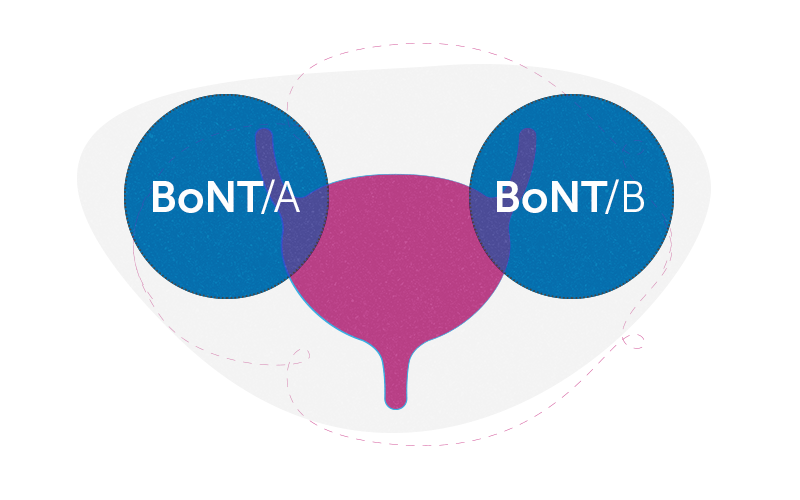Building a bladder-specific Botox

Botulinum toxins are bacterial neurotoxins that also have a range of therapeutic uses. In urology, injections of these potent substances can relax the bladder muscle, helping treat conditions such as overactive bladder and neurogenic bladder. Of the seven types of botulinum toxin, two have been approved by the U.S. Food and Drug Administration (FDA): botulinum toxin A (BoNT/A, sold as Botox) and botulinum toxin B (BoNT/B).
Botulinum toxins work by attaching to nerve receptors in motor neurons controlling muscles, where they block the release of neurotransmitters, leading to muscle paralysis. BoNT/A is “almost perfect for paralyzing skeletal muscles,” says by Min Dong, PhD, a researcher in Boston Children’s Department of Urology. But when it comes to the toxin’s use in urology, there’s room for improvement. In fact, the nerve receptors in bladder tissue are different from those in skeletal tissue. And though safe and effective, both BoNT/A and BoNT/B have the potential to drift from the site of the initial injection, decreasing efficacy and increasing the chance of side effects.
But what if it were possible to create a botulinum toxin that treats urologic conditions without the challenges? That’s the question that fuels Dong’s ongoing work. “Our goal is to develop a chimeric toxin that offers urologists the best of both worlds,” he says.
A toxin tailored to urologic disorders
Such a hybrid botulinum toxin is already in the pipeline, based on more than a decade of research by Dong and his colleagues. In earlier work, they genetically engineered changes to BoNT/B that improved its ability to bind to nerve cells. When administered in a humanized mouse model, the engineered toxin was absorbed more efficiently than the current FDA-approved form of BoNT/A and BoNT/B, leading to more effective and longer muscle paralysis. This means that lower quantities of the toxin would be required for a therapeutic benefit.
These advances have attracted industry attention, and the chimeric A/B toxin has been licensed by a major pharmaceutical company. Through that partnership, a Phase 1 clinical trial testing its safety in humans is now underway. Depending on those results, Dong hopes that an improved botulinum toxin could be available to urologists within the next several years.
“By engineering it to specifically target bladder tissue, we could have a therapeutic toxin that’s tailored to urologic disorders and is more effective than Botox,” he says.
Have questions or want to refer a patient? Contact the Department of Urology.
Related Posts :
-

Parsing the promise of inosine for neurogenic bladder
Spinal cord damage — whether from traumatic injury or conditions such as spina bifida — can have a profound impact on bladder ...
-

Unveiling the hidden impact of moyamoya disease: Brain injury without symptoms
Moyamoya disease — a rare, progressive condition that narrows the brain’s blood vessels — leads to an increased risk of stroke ...
-

Forecasting the future for childhood cancer survivors
Children are much more likely to survive cancer today than 50 years ago. Unfortunately, as adults, many of them develop cardiovascular ...
-

Genomic sequencing transforms a life: Asa’s story
Asa Cibelli feels like he’s been reborn. The straight-A middle schooler plays basketball and football, does jiu jitsu, is ...





